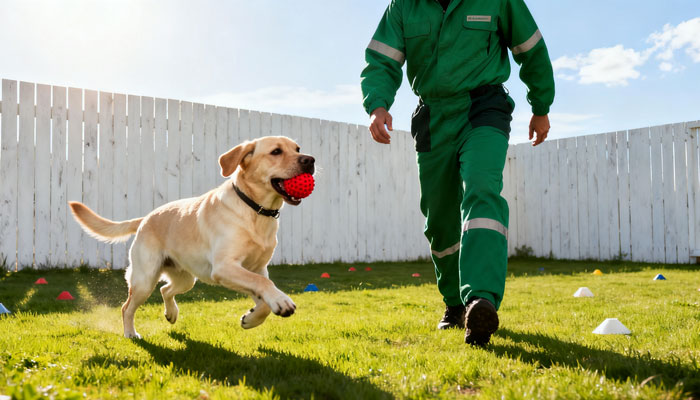Dog Training: 10 Essential Tips for Owners to Master

The first stage in dog training is obedience training, which involves teaching the dog to understand and obey its owner. The process not only helps in daily care through brushing, bathing, nail trimming, removing foreign objects from the mouth, and administering medication but also allows dogs to co-exist with their owners and families, thus reducing the chances of accidents. Consequently, all dog owners should make it a point to ensure their pets undergo proper professional dog training sessions with emphasis on foundational obedience training.
Key Points of Dog Training:
As the most important component of dog training, obedience training aims to instruct dogs to perform their owner’s commands. Besides easing routine care through brushing, bathing, nail trimming, removing foreign objects from the mouth, and administering medication, this defining stage of training also allows dogs to co-exist with their owners and families, thereby dramatically lowering the risk of accidents. Hence, all dog owners should give utmost priority to dog training and diligently commit themselves to the task of training the dogs with obedience as the focal point.
When conducting dog training, note the following points:
(1) Puppies are recommended to start training from the age of 70 days, and adult dogs should begin training immediately.
(2) When teaching new commands, work the dog in a quiet, familiar, and safe setting. In a slightly distracting environment, review the commands the dog has understood. In a more distracting setting, rehearse the commands that the dog has fully learned. Such gradation puts the dog’s focus on the trainer gradually through the training process.
(3) Observe the principle that shorter everyday training sessions give better results. For example, a schedule of two training sessions of 5-10 minutes each is more effective and keeps the dog interested than doing one 20-minute session only.
(4) Do not overtrain during the sessions. For example, when the “sit” command is being taught, once the dog is able to do it well (or occasionally) after several tries, give it encouragement. This is much better than forcing the dog to do ten consecutive repetitions that may end with failure.
(5) At the very beginning of training, it is sometimes difficult to catch the dog’s attention. Patience is the key here—don’t rush and go step-by-step.
(6) The best method is to reward immediately after each correct performance with treats like meat. If the dog does not get happy during the training, the work will not be done in the desired way.
(7) Timing is the most important factor when correcting bad behavior in training. Do correction at once with a heavy command the moment the dog is ready to do wrong, not after the act. This is one of the main points that determine the effectiveness of the training.
(8) Repetition helps the dog to remember. If training is rushed, the dog may resist and run away. For this reason, the dog should not be expected to learn a skill just in one day. Rather, the training should be reviewed and reinforced day after day.
(9) The use of physical punishment in training pets should be limited to instances when the dog is about to bite someone. Training methods for large dogs should be tailored to personality traits and some may need certain reinforcement techniques only. Also, if the use of iron collars or spiked collars does not help with training, then seek advice from the vet or a dog trainer right away.
(10) Obedience training is the foundation of dog training and requires practice, persistence, patience, diligence, and rewards. In addition, doing sports with your dog during training is also a good way to get better results.
admin
-
Sale!

Washable Pet Cooling Pad for Cats and Dogs
$10.99Original price was: $10.99.$9.99Current price is: $9.99. This product has multiple variants. The options may be chosen on the product page -
Sale!

Washable Cat Window Hammock Cooling Bed
$23.99Original price was: $23.99.$22.99Current price is: $22.99. -
Sale!

Tropical Amphibian Rainforest Tank, Lizard Cage
$38.99Original price was: $38.99.$36.99Current price is: $36.99. -
Sale!

Silent 4-in-1 Waterproof Charging Dog Hair Trimmer
$49.88Original price was: $49.88.$47.99Current price is: $47.99.